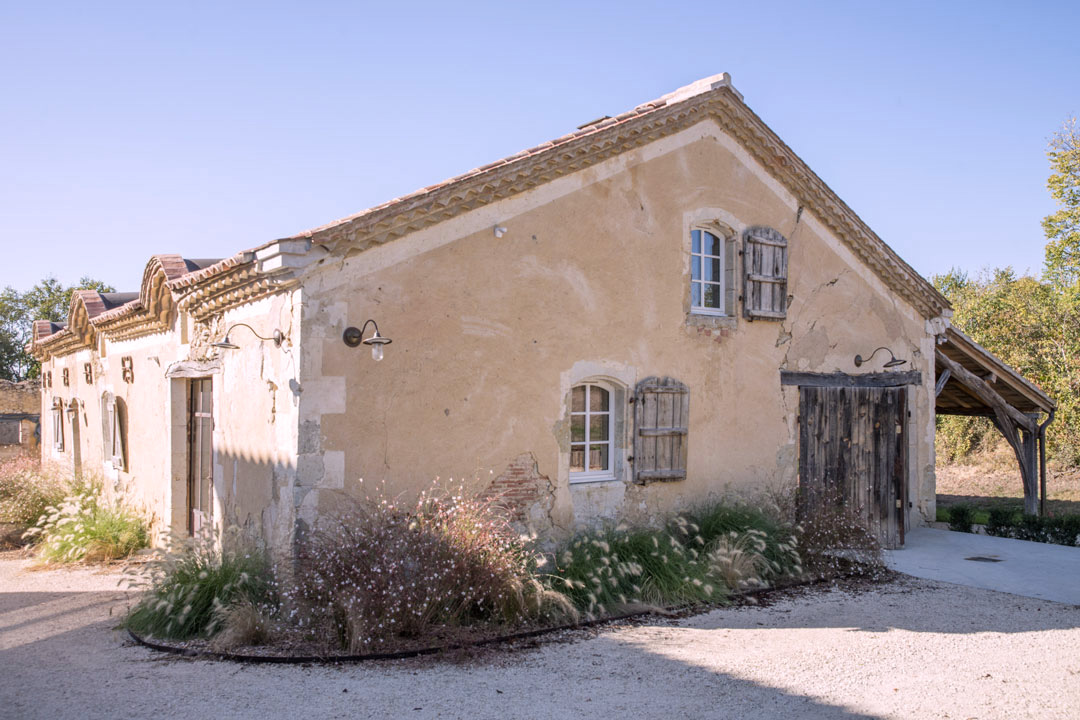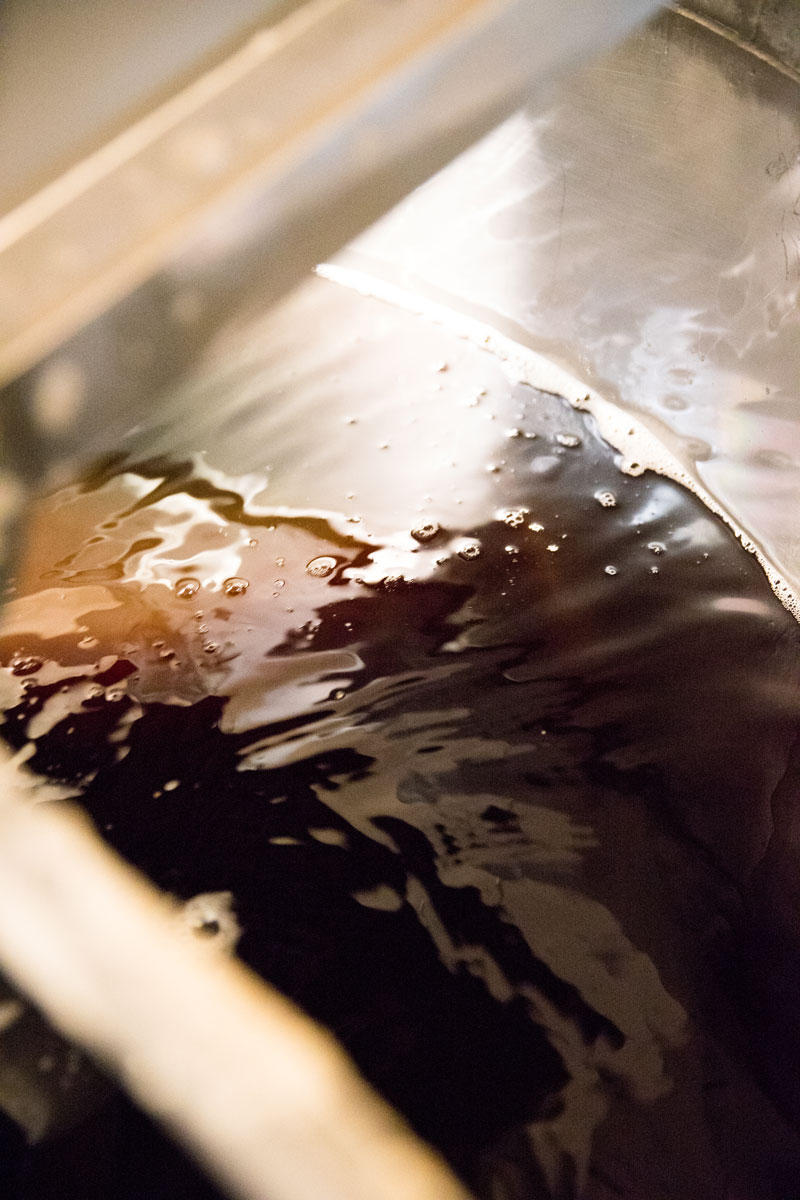A thoughtful restoration
The restoration of the winery required a lot of thought.
The challenge was to adapt the 18th-century building to the conditions of modern production while preserving all the ancient elements.
Cécile wanted to keep the original outdoor look, marked by the passing of time, while the concrete and wood interior is in keeping with the elegant and functional design of a 21st-century office.

Here, there is no dream of career change or mid-summer’s night dream on the farm. The winemaker lives with her time, with down-to-earth principles deeply rooted in the 21st-century cold facts.
There is a constant temperature of around 30 degrees; the barrels containing the wine vinegars are lined up in three rows. The latter are half-filled so that the oxygen loaded with acetic bacteria can do the job – it is this sour smell that strikes one when one enters the cellar -; they are not sealed as are the wine barrels, but covered with a white cloth, as if a secret ceremony is being held.

In this sense, the current building development of the winery is a successful compromise.

The vintage vinegars of white and red wines, all made from single grape varieties, are aged in traditional barrels on the ground floor.
The Balsamic vinegars first floor
Closer to the light roof wood frame, the “baby” wooden barrels where the balsamics are prepared are stored in descending order, each revealing the aroma specific to the wood in which it is aged – either oak, acacia, chestnut or cherry – and bringing forward the concentration process. Like a vinegar “nursery” from which will come the precious juices.

Manual production
There is a clear-cut delineation between between the two floors – on the one hand, the astringent odour of vinegars, on the other, the soothing multi-scented air laden with balsamic aromas. It is quite a philosophy, even an artistic process, to combine these contrasting crafts.
Once elaborated, fine and ready, all the Balsamic production is once more handled by the winemaker for bottling, going through the hands of the maker who numbers the bottles of her limited production, far from automated manufacturing.



